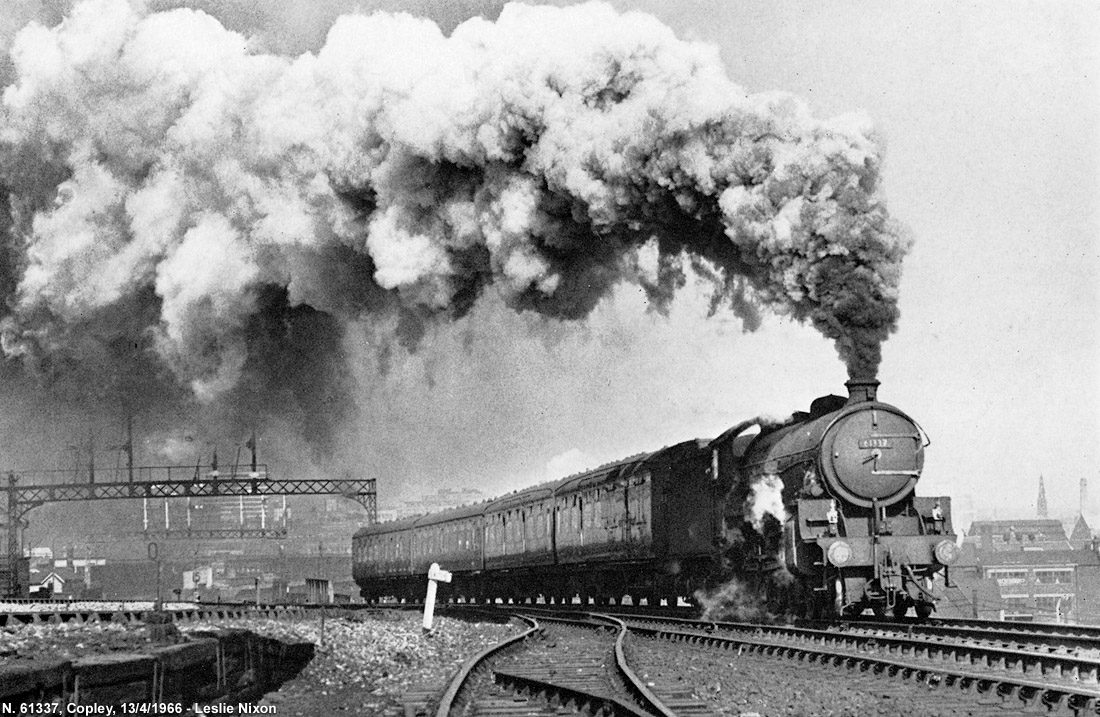| Nuovo! Leslie Nixon 5 No. 61337 leaves a smoke screen as it climbs the bank to Copley with the 4.10 p.m. Leeds Central-Cleethorpes on April 13, 1966. |

| Nuovo! Leslie Nixon 5 No. 61337 leaves a smoke screen as it climbs the bank to Copley with the 4.10 p.m. Leeds Central-Cleethorpes on April 13, 1966. |
